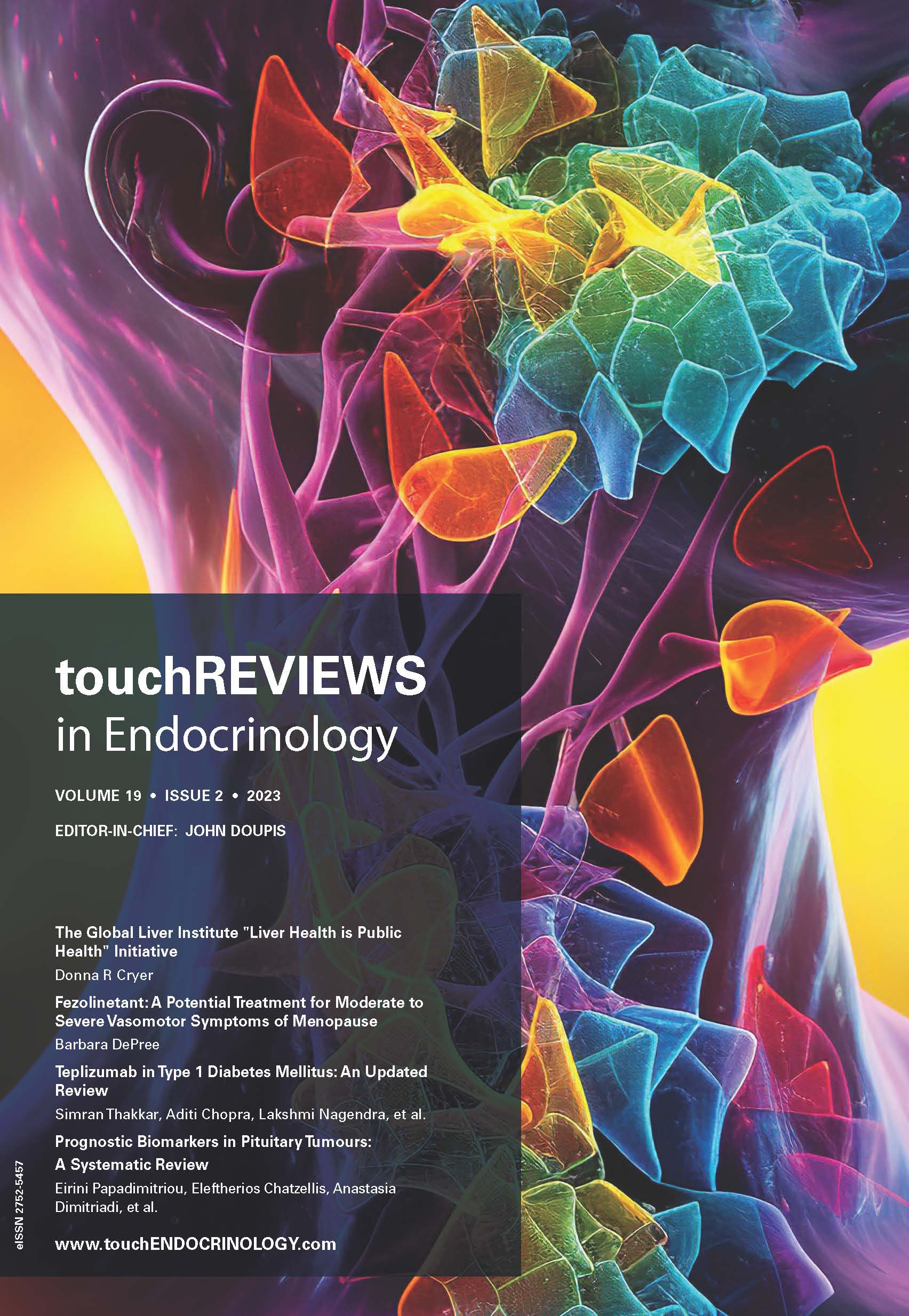
EUROPEAN ENDOCRINOLOGY – VOLUME 5 – SUMMER 2009
Current Issues International Health and Diabetes
Intersecting Epidemics Diabetes and tuberculosis (TB) have existed for thousands of years. Great physicians in the ancient civilisations of Egypt, India, Greece and Rome described an illness that we now understand as diabetes. Similarly, the earliest evidence of TB has been found in the skeleton of a 30-year-old woman in Italy, dated to 5,800BCE.1 The […]
A few decades ago, diabetes was considered a disease of affluent societies. This statement would be rather inappropriate today as it is known that most of the world’s diabetes patients live in developing countries. In absolute numbers, most of these people live in China and India.
IDF is an associated non-governmental organisation (NGO) with the UN Department of Public Information and is in official relations with the World Health Organization (WHO) and the Pan-American Health Organization (PAHO). The Federation also works closely with other diabetes organisations, governments, health professionals, civil society, education and research institutions, pharmaceutical and other industries and other […]
Diabetes Pathophysiology and Genetics
Insulin resistance in skeletal muscle and the liver is a central feature of type 2 diabetes.1 Insulin resistance is also believed to be the underlying mechanism responsible for the metabolic syndrome. Insulin-stimulated glucose disposal in skeletal muscle is reduced in insulin-resistant individuals due to impaired insulin signalling and multiple intracellular defects in glucose metabolism (reviewed […]
In distant species and invertebrates, the foundations of the neuroendocrine and immune systems have co-existed until now without any apparent problem. Some 470 millions years ago, while gene conversion already determined some rudiments of immune diversity in primitive vertebrates (such as jawless fishes), adaptive immunity emerged in lymphoid cells of cartilaginous fishes (i.e. sharks and […]
The incidence of type 2 diabetes is rising rapidly worldwide, and there are already more than 180 million diabetic subjects. Type 2 diabetes risk factors include ethnic background, age, hypertension, overweight, increased abdominal fat and lack of physical exercise. Obesity is considered to be the most important risk factor for type 2 diabetes and the […]
Diabetes Management
The prevalence of type 2 diabetes is rapidly increasing. Most people are asymptomatic at diagnosis and the assumption is made that early diagnosis and treatment of type 2 diabetes will be beneficial, although definitive evidence is lacking.
Incretin Mimetics
Incretin-based Therapies
Diabetes and Cardiovascular Risk
Summary of the ADVANCE Trial Findings
Pituitary Disorders
Active acromegaly is associated with a two- to three-fold increase in mortality that can be reduced to that of the background population with effective treatment to decrease growth hormone (GH) and insulin-like growth factor-I (IGF-I) levels to within normal limits. Advances in surgical techniques, new approaches in radiotherapy and a choice of medical treatments make […]
Pituitary adenomas are common intracranial tumours, and clinically relevant pituitary adenomas have been estimated to occur in about one in every 1,000 of the population. The vast majority of these adenomas are sporadic; however, there is increasing recognition that pituitary adenomas may also occur in a familial setting, and a recent estimate suggests that 5% […]
Thyroid Disorders
Aetiology, Epidemiology and Risks
Congenital hypothyroidism (CH) is the most common congenital endocrine disease and avoidable cause of severe mental retardation. L-thyroxine supplementation started by two to three weeks of age can prevent severe neurological damage. Thus, in economically advanced countries, neonatal screening programmes have been instituted to allow early CH detection and initiation of therapy.
Parathyroid Disorders
Primary Hyperparathyroidism – An Evolving Disorder
Erectile Dysfunction
During the past two decades there has been a dramatic increase in our understanding of the physiology of an erection, as well as of the pathophysiology involved in the decline of erectile function. Men may suffer from erectile dysfunction (ED) as a result of psychogenic factors, such as performance anxiety. Less common are endocrinological influences […]
Background and Animal Studies

Trending Topic
Approximately 20–34% of hospitalized patients have a diagnosis of diabetes, while many others experience stress hyperglycaemia, both increasing the occurrence of dysglycaemia in the hospital.1 Hyperglycaemia is associated with increased infection rates and higher mortality rates. Conversely, hypoglycaemia can lead to adverse neurological outcomes, prolonged hospital stays, as well as increased mortality.1 In spite of current guidelines […]
Journal Archive
touchREVIEWS in Endocrinology (previously European Endocrinology) is a peer-reviewed, free-to-access, bi-annual journal comprising review articles, case reports, editorials, special reports and original research. It features balanced and comprehensive articles written by leading authorities, addressing the most important and salient developments in the field of endocrinology.
Latest articles videos and clinical updates - straight to your inbox
Log into your Touch Account
Earn and track your CME credits on the go, save articles for later, and follow the latest congress coverage.
Register now for FREE Access
Register for free to hear about the latest expert-led education, peer-reviewed articles, conference highlights, and innovative CME activities.
Sign up with an Email
Or use a Social Account.
This Functionality is for
Members Only
Explore the latest in medical education and stay current in your field. Create a free account to track your learning.





